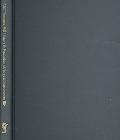

 |

|

The average rating for History and Evolution of Surgical Instruments based on 2 reviews is 3.5 stars.
Review # 1 was written on 2018-02-18 00:00:00 Alan Moon Alan MoonNot knowing much of Mexican history, I was intrigued to read this book in the hopes that it might expand my knowledge of the topic. I did learn a great deal, though not exactly what I was anticipating. Not at all a retelling of the time period of La Revolucion, Thomas Benjamin has instead put together a well-researched analysis of the formation of Mexican national mythology, specifically relating to La Revolucion of 1910-1920. This was an extremely chaotic time in Mexico, as factions supporting charismatic leaders such as Zapata, Villa, Carranza, Madero, and Obregon vied for control over the direction of the country following the downfall of the Porfirio Diaz regime. Even after the deaths of their respective leaders, the factions remained deeply divided, preventing a unifying account of history and slowing the progress of the new government. Benjamin explores how in the decades that followed, the ensuing regimes captured the idea of La Revolucion and turned it into a conciliatory symbol through the use of festivals, holidays, monuments, artwork and eventually official recounting of national history. This book is an interesting and scholarly examination of how a nation forms its national myths and traditions and how these are employed to cultivate patriotism and suppress opposition. |
Review # 2 was written on 2012-09-30 00:00:00 Cecilie Lauritsen Cecilie LauritsenBenjamin's book examines how the armed conflict following the 1911 overthrow of Porfirio Díaz became "La Revolución." Specifically, Benjamin evaluates the interpretation of the ongoing revolution at three historical moments in three chapters – 1911-1913, 1913-1930, and 1920-1928 – and the institutionalization of the Revolution during the first half of the 20th century in the forms of festivals (the 20 de noviembre celebrations), monuments (the Monumento a la Revolución), and historical narratives (the writing of official histories), each allocated a chapter. An introduction and conclusion bookend these chapters and, helpfully, Benjamin includes chronologies related to the events of the Revolution and short biographies of the canonical Revolutionary heroes. The novelty of Benjamin's sources (what he calls "minor political writings," see p. x) make the account compelling; focusing on the likes of pamphlets, event programs, newspaper editorials, and posters, and read by mostly "middle-class urbanites" (33), Benjamin effectively gives some idea of how these actors interpreted the Revolution even as it progressed. While I wonder about the rural and lower-class experiences of these events, Benjamin makes the bias of his sources clear and modestly hopes that the book will be "something of a stepping-stone, helpful in [future historians'] endeavors to take this subject further" (33). While I wouldn't fault the author for these exclusions, which he makes clear at the onset, I do wonder about the context for his sources. I'm not an expert in the field, so a few basic statistics – who was literate? Where did these writings circulate? How did these change over the course of the first half of the 20th century? – would have been helpful. On the theoretical end of things, I would have been curious to see what Benjamin made of Trouillot's Silencing the Past: Power and the Production of History. Many of Trouillot's concerns – the relationships between historicity 1 (what happened) and historicity 2 (what was said to have happened), the production of historical narratives outside the academy, the entry of silence into history not as an absence but as a necessary, power-laden constituent, and the like – square very well with the objectives of Benjamin's study. Regardless, it's a credit to the author that his interpretations of his evidence provoke these kinds of questions. Benjamin writes with admirably clarity, and the organization of the book is logical (if slightly complicated, with all the chronologies included). The conclusion is also a helpful introduction to the more recent historiography of the Revolution. |
CAN'T FIND WHAT YOU'RE LOOKING FOR? CLICK HERE!!!